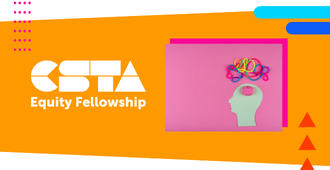In over 22 years of teaching, I have watched students and their learning environment change. The expectations placed on students as young as five have increased substantially. Expectations are higher, and more students are being considered behind when they do not meet the ever-growing demands in the classroom. There is nothing wrong with high expectations. That is, if the students are being provided with the supports necessary to access them. For any students with executive function struggles, classroom demands are increasingly difficult to manage. This is especially true for neurodiverse students who are faced with a myriad of challenges related to their diagnosis. Without the executive function skills to plan, organize, prioritize, initiate, regulate emotions, and sustain attention, a seemingly simple task can become unsurmountable.
Executive function is the cognitive skills necessary to carry out tasks. It helps a person manage emotions, actions, and thoughts. Struggles with executive function skills impact a student academically and socially. Prioritizing, planning, initiating, and sustaining attention to a task is necessary in all aspects of a student’s day. Before the first bell, they are expected to get ready for the day. It is a routine set forth by the teacher and practiced repeatedly the first week of school. For some students, the routine works, but for others, it is a daily struggle to plan, prioritize, initiate, and sustain attention.
The goal is clearly stated: Get ready for the day. But does that look the same every day for every child? Think of the plethora of decisions that need to be made each morning. Do I need to get breakfast? Do I need to sign up for lunch? What is for lunch? Where is the menu? Did I pack? Should I return my library books now? What do I need to take out of my bookbag? Should I keep my jacket on or put it in my bookbag? Will I need my math book? How am I getting home today? Do I have a dismissal note? Should I tell the teacher about what happened in the hallway? Should I ask for help on the math homework from last night? Did I remember to bring my library books?
Without the executive function skills necessary to plan and prioritize, this inner dialogue can end with an overwhelmed child standing in the middle of the classroom with a bookbag, jacket, and books all over the place. They have not signed up for lunch. They have forgotten to go to breakfast, and they are rushed to get ready by the teacher. Now they are in trouble for showing a friend their new trading card. :Insert emotional meltdown here:
Computational thinking is a set of skills used to analyze and solve problems in computer science. It has four main pillars: decomposition, pattern recognition, abstraction, and algorithmic thinking. Decomposition involves breaking a problem or task down into smaller, more manageable parts. Pattern recognition involves identifying known information, repeated trends, and connections between ideas. Abstraction involves determining what information is important to solving the problem or completing the task. Algorithmic thinking calls for the creation of a step-by-step process to solve the problem or complete the task.
When presented to students as a problem-solving strategy, the four pillars of computational thinking can assist them not only with problem-solving and everyday tasks but also help them improve their executive function skills. Decomposition coincides with planning and organization. Teaching students how to break apart tasks not only makes the task more manageable but demonstrates how all problems are composed of smaller parts. Students can use this to plan large projects, write essays, solve math problems, or get ready for the day.
Pattern recognition can assist students with identifying similarities and known information. Identifying repeating elements in a problem or task can assist with working memory and the manipulation of information while developing a solution or completing a task. This can be useful for identifying known information in a math problem or identifying the repeating components of the paragraphs making up an essay. It can also be helpful for students to look for patterns related to emotional dysregulation. Identifying patterns leading to behaviors can help students recognize and self-advocate.
The concept of abstraction can assist students with prioritizing and planning. Teaching students to identify what is essential to a problem or task helps them determine which items are necessary and which are a distraction. For example, when working on a project, abstraction can help a student determine if it is more important to spend time on a part which is not scored versus a part which will be scored. It can also assist with maintaining focus on the important elements of a problem or task instead of going down a rabbit hole to answer a question about which they are just curious.
Finally, algorithmic thinking, creating and following a step-by-step solution, can help students learn to stay on task and minimize tangents. Learning to follow a self-created list of tasks to solve a problem or complete a task allows the student to take ownership of their process and can help them maintain focus on the solution. Being able to complete a task and know what is next can also help with planning and organization. A student-created checklist (algorithm) for the morning routine can act as a reminder and help a student focus their attention on getting ready for the day.
Using computational thinking to foster executive function skills is a strategy that can be started as soon as a child enters school. Children are not born with these skills, and they continue to develop well into a person’s 20s, but they can be fostered if explicitly taught. Educators at all levels can benefit from learning about computational thinking and how to implement it as a problem-solving strategy in their classrooms. These skills seem to be lacking more and more each year. It is imperative that students develop these skills as they are necessary for success not only in school but also in life.
References
Robertson, J., Gray, S., Martin, T., & Booth, J. (2020). The relationship between
executive functions and computational thinking. International Journal of
Computer Science Education in Schools, 3(4), 35–49.
https://doi.org/10.21585/ijcses.v3i4.76
Robledo-Castro, C., Hederich-Martínez, C., & Castillo-Ossa, L. F. (2023). Cognitive
stimulation of executive functions through computational thinking. Journal of
Experimental Child Psychology, 235, 105738.
https://doi.org/10.1016/j.jecp.2023.105738
Asbell-Clarke, J. (n.d.). Computational Thinking and Executive Function: Where
Neurodiversity shines. TERC. Winter 16, 2025,
https://blog.terc.edu/computational-thinking-and-executive-function
About the Author

Verna Hiser boasts 22 years in education, including 12 dedicated to gifted education and 4 focusing on computer science. A 2023 Amazon Future Engineer Teacher Ambassador, she is nationally board certified in gifted and talented education. Verna’s passion lies in providing inclusive computer science opportunities for neurodivergent students, particularly those who are twice exceptional—gifted with a disability. Her commitment to STEM education is evident through her involvement in project-based learning, Maryland Engineering Challenges, First Lego League robotics, and Destination Imagination. As a mother of three neurodivergent sons, Verna balances her professional life with her personal interests in Legos, reading, and acting.

